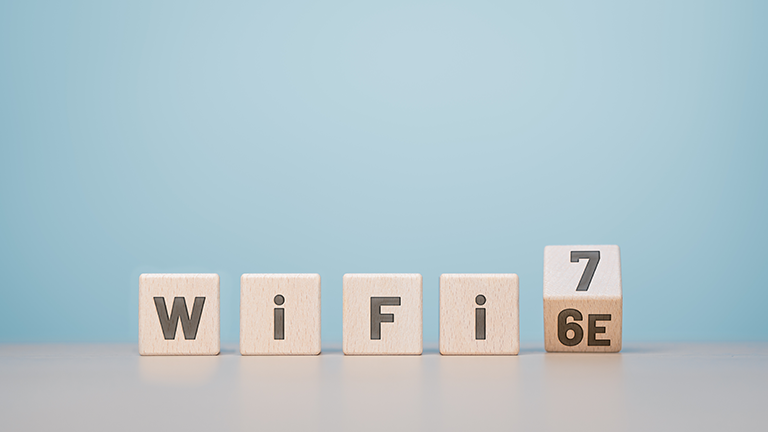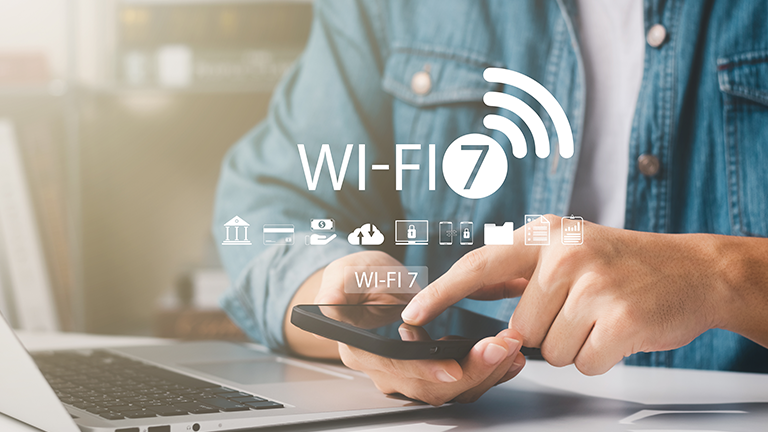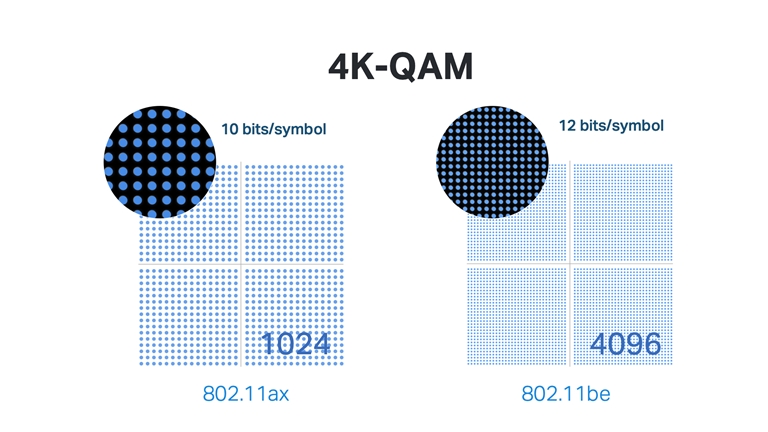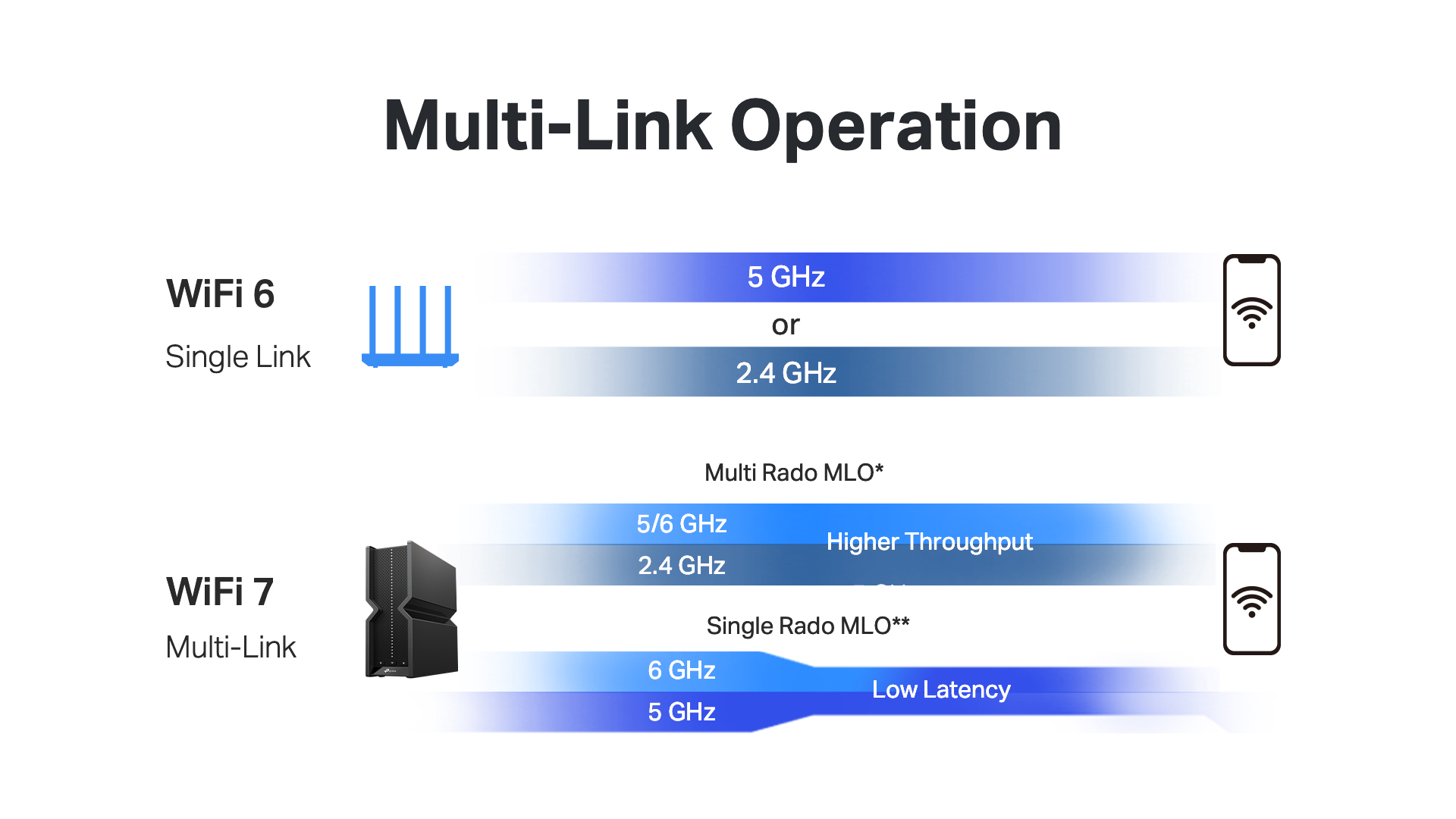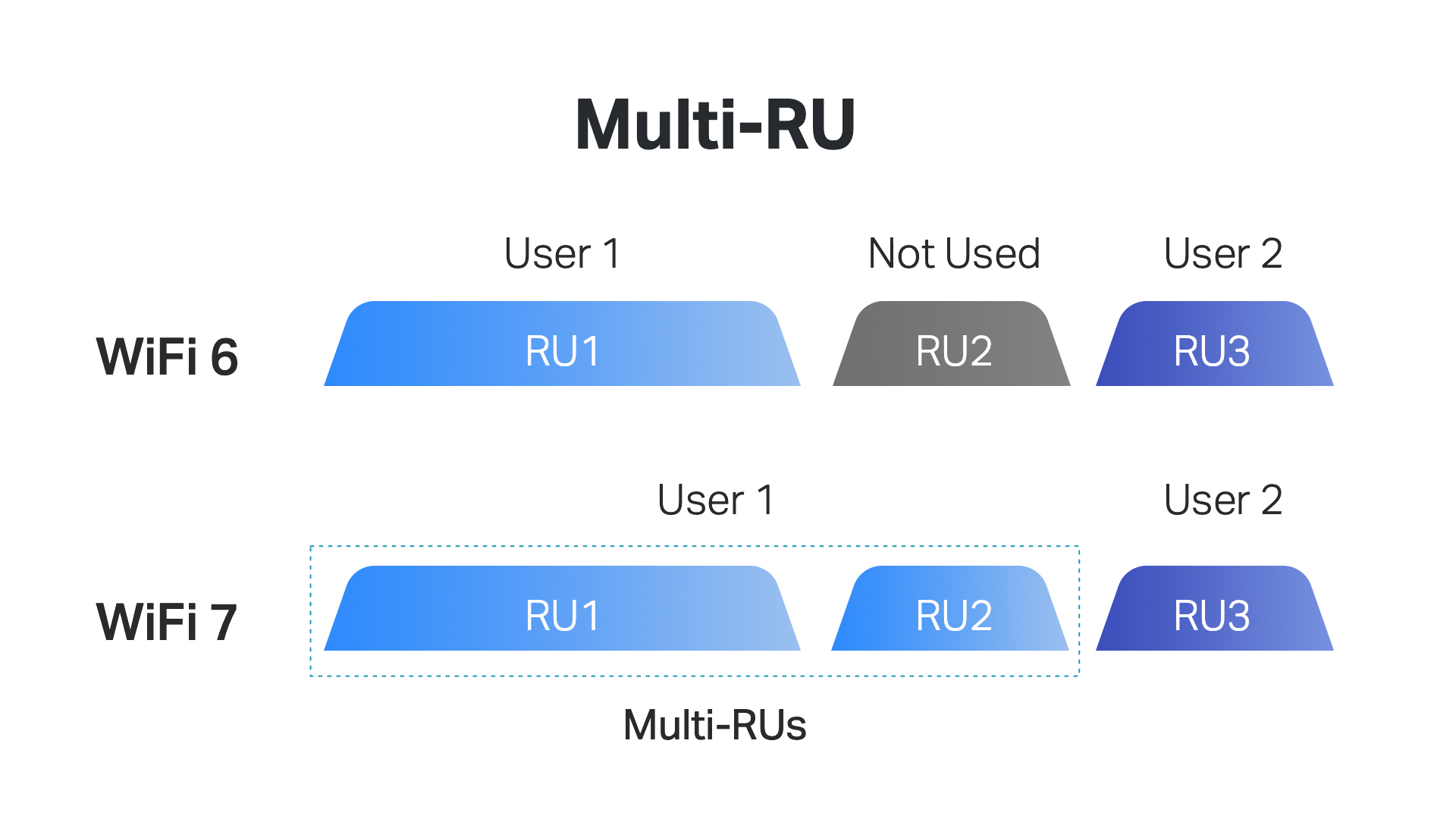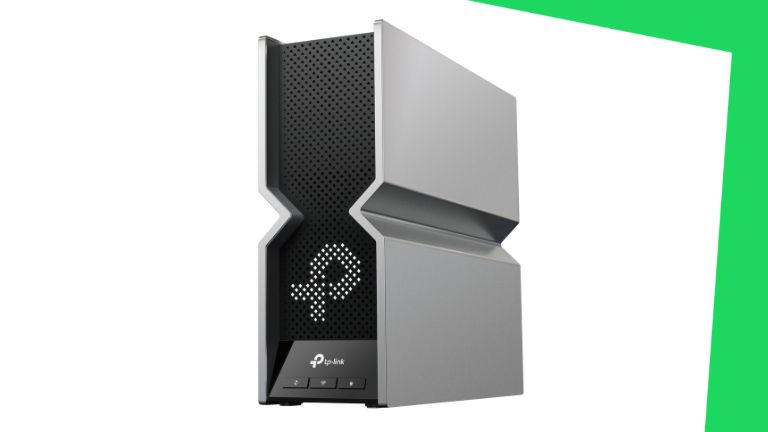Welcoming WiFi 7: Here's what you need to know
WiFi 7 has arrived! Get clued in on the new wireless standard here.
After a tidy two years sitting atop the wireless food chain, WiFi 6 (and 6E) is finally getting dethroned by WiFi 7. Yet, the brand-new wireless standard is more than just a simple “update” – it comes with a whole new bag of tricks promising faster and smoother connections than ever before.
Simply put, that means we’ll soon have better WiFi for work and play, though it’ll take a while for most of our current-gen hardware to catch up. So, in the meantime, let's check out how WiFi 7 works.
What is WiFi 7?
Much like WiFi 6 before it, WiFi 7 (otherwise referred to as 802.11be in techspeak) is a new standard that opens up new possibilities for wireless connectivity, both at home and in the workplace.
Straight off the bat, WiFi 7 promises to offer users double the bandwidth currently provided by WiFi 6. This translates to a whopping 320 MHz of bandwidth on the new 6 GHz band compared to 160 MHz on the 5 GHz band, effectively allowing WiFi 7 to transmit twice as much data as WiFi 6.
How does Wi-Fi 7 deliver better performance?
On top of the bigger figurative pipe for data described above, there are three other areas where WiFi 7 stands out from previous generations of wireless standards:
Increase Efficiency with 4K QAM
Quadrature Amplitude Modulation, otherwise referred to as QAM, is a method of combining multiple signals (usually two) into a single channel.
An easier way to look at it would be to imagine your data as a lunch order that you’ve placed through a delivery service. With WiFi 6, it’s like the service packs and delivers your food, drinks, and desserts separately, which can often be inefficient.
How WiFi 7 is different: Compared to previous generations of WiFi, which are only capable of 1K QAM, WiFi 7 offers 4K QAM, which squeezes more of your data together for transmission. In context, the delivery service now takes care to pack as much of your lunch order as possible into each van. This improves the efficiency of activities like gaming or streaming by up to 20%.
Sidestep Congestion using MLO
Arguably the “crown jewel” of WiFi 7, Multi-Link Operation (MLO) is a feature that allows WiFi 7-capable routers to rely on multiple channels for device connection instead of just one.
Let’s say you’ve ordered lunch through the very same delivery service as before. Now imagine that your assigned delivery driver runs into heavy traffic along one of two given routes. Normally, your lunch would be delayed because the driver is simply stuck on that one congested route. By that same token, since previous wireless standards (and routers), including WiFi 6 and 6E, only allowed connections via one channel at a time, they were highly susceptible to congestion and other interruptions within that channel.
How WiFi 7 is different: In this example, it would be like the same driver is travelling along both routes at the same time, ensuring that your food reaches you on time even if one route is affected. MLO thus allows WiFi 7 to deal with this age-old problem in a simple yet elegant way, while also boosting the consistency and stability of your wireless connections.
Maximise Transmission via Multi-RU Puncturing
Multi-Resource Units (RU) Puncturing is yet another characteristic feature introduced in WiFi 7. Much like MLO, it also works to address congestion issues, but handles a different aspect of the issue.
Conventionally, when a connected device is using a channel, the entire channel cannot be used by any other devices on the network. Bringing back the lunch delivery example from before, this would be the equivalent of the driver having to select an alternative route because the van is simply too big to fit onto the main route with other cars.
How WiFi 7 is different: With Multi-RU Puncturing, the figurative delivery service is told to repack your lunch into a number of smaller vans, allowing them to fit on the main route with other cars such that your lunch is delivered as intended.
WiFi 7 vs. WiFi 6/6E vs. WiFi 5
Understandably, it can be tough trying to sort through all of that information above, much less differentiating between the various wireless standards. With that in mind, here's a table to help you out.
| WiFi 7 | WiFi 6E | WiFi 6 | WiFi 5 | |
| Launch Year | 2024 (expected) | 2021 | 2019 | 2013 |
| IEEE Standard | 802.11be | 802.11ax | 802.11ax | 802.11ac |
| Max Data Rate | 46 Gbps | 9.6 Gbps | 9.6 Gbps | 3.5 Gbps |
| Bands | 2.4 GHz, 5 GHz, 6GHz | 2.4 GHz, 5 GHz, 6GHz | 2.4 GHz, 5 GHz | 5 GHz |
| Channel Size | Up to 320 MHz | 20, 40, 80, 80+80, 160MHz | 20, 40, 80, 80+80, 160MHz | 20, 40, 80, 80+80, 160MHz |
| Modulation | 4096-QAM OFDMA (with extensions) | 1024-QAM sOFDMA | 1024-QAM OFDMA | 256-QAM OFDM |
| MIMO | 16x16 UL/DL MU-MIMO | 8x8 UL/DL MU-MIMO | 8x8 UL/DL MU-MIMO | 4x4 MIMO DL MIMO |
| RU | Multi-RUs | RU | RU | - |
| MAC | MLO | - | - | - |
What will I need WiFi 7 for?
Enjoy Stellar Gaming Experiences
When it comes to gaming, there’s little room for debate - you want your data moving as fast AND as smoothly as possible. After all, losing an important match because you lagged out at a critical moment is probably one of the worst ways to go.
But fret not, because such problems can be nipped in the bud by securing a WiFi 7 router like the TP-Link EB810v for your home. Not only does it come with a sleek, edgy aesthetic (perfect for gamers!), but it also offers BE22000 (Tri-Band) speeds and FIVE different ports for users to connect to. Let's check it out.
| Type of Router | TP-Link EB810v |
| Dimensions | 96 x 302 x 262.5 mm |
| WiFi Standard | BE / WiFi 7 Ready |
| Max WiFi Combined Bandwidth | 22,000 Mbps (Tri-Band) |
| Concurrent Transmission Streams | BE22000 (Tri-Band) 2.4 GHz: 4x4 @ 40 MHz, 1376 Mbps 5 GHz: 4x4 @ 240 MHz, 8640 Mbps 6 GHz: 4x4 @ 320 MHz, 11520 Mbps |
| Design | 8 x Internal Antenna |
| Internet WAN Port | 10 Gbps |
| Dedicated 10Gbps LAN Port | 1 |
| 1Gbps LAN Port | 0 |
| 2.5Gbps LAN Port | 3 |
| USB Port | 1 |
| Voice Support | No |
At first glance, having multiple ports might not seem revolutionary at first, but it’s worth noting that today’s gaming devices offer the best experiences when they’re hooked up to a wired connection.
Among other reasons, these promise better and more stable connectivity, and the EB810v comes with TWO more 2.5Gbps LAN ports than most options on the market. Needless to say, this doesn’t just benefit those intending to game on PCs or laptops – console and even mobile gamers will also get solid mileage out of a WiFi 7 router as more devices adapt to accommodate the new wireless standard in future.
Superb Uploads and Downloads
Even if they aren’t gamers, most folks today still interact with the Internet a great deal.
From streaming Premier League matches on TV, to uploading work documents online, and even connecting with loved ones over apps like Zoom, so much data travels to and from our devices every moment. In fact, content creators, influencers and other digital-centric occupations rely immensely on uploads to develop their profile and communities.
Now imagine being able to do all of these tasks not just faster, but more smoothly with WiFi 7. Putting this into context, a large file upload such as a photo collage that might have previously caused congestion on WiFi 6/6E now flows through the pipe a lot quicker. Pair it up with a super-fast connection like StarHub 10Gbps Broadband, and you’ll be able to get much more done within the same amount of time.
Never Compete for Bandwidth at Home Again
He’s watching the Smart TV, she’s working on a tablet, and everyone else is probably using their smartphones. All at the same time, no less.
Nowadays, smart devices have become so common that many of us probably own more than one, to say nothing of household appliances like smart TVs and refrigerators. In fact, as of the third quarter of 2022, research firm Statista estimated that a solid 94.4% of Singapore’s adult population already owned a smart device in some shape or form, and this figure is only expected to increase.
But as the number of devices at home goes up, congestion issues will naturally follow, and that’s why features like MLO and Multi-RU Puncturing are so welcome on WiFi 7. They allow every user to enjoy the seamless online experiences that they deserve without affecting other people at home. Competing for bandwidth will become a thing of the past, and everyone gets to experience more of what they love, whenever they want to!
How can I get WiFi 7 in Singapore?
Make no mistake, WiFi 7 introduces some truly remarkable changes, and the best part is that you’re only one step away from enjoying all that it has to offer!
To celebrate the launch of the WiFi 7 standard, StarHub is proud to present a whole new value bundle from just $69.95/mth. Combining the unmatched speed of our proprietary 10Gbps Broadband and UltraSpeed Network with the cutting-edge TP-Link EB810v WiFi 7 router, it’s ideal for techies, gamers, and everyday homeowners alike.
Finally, if you’d like some (read: unlimited) entertainment to go with your shiny new router, you might also want to consider our WiFi 7-ready HomeHub+ UltraSpeed bundle!
Frequently Asked Questions (FAQ)
Still got some questions about WiFi 7 left in the tank? Let's see if we can get them cleared up!


 Back
Back